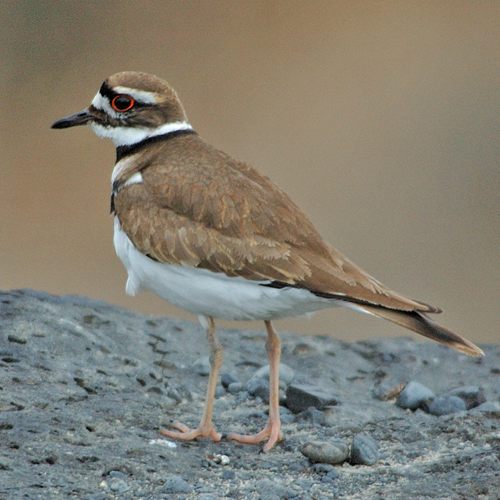General Description
The Killdeer is the largest of the ringed plovers, and the only plover in its range with a double breast band. Killdeers have brown upperparts, white underparts, and orange rumps. Adults and juveniles look the same year round, but young, downy chicks have a single breast band. In flight, the Killdeer's long, slender wings have conspicuous white wing stripes.
Killdeer's are Common in Western Washington year round.Habitat
Killdeers frequent a variety of open habitats such as fields, meadows, gravel bars, and mudflats throughout the United States and most of Canada. They require a sandy or gravelly substrate for nesting near a wet or muddy area where they can forage. Killdeers are often found in human-modified habitats such as gravel roads, driveways, parking lots, and lawns. They may be found in upland areas far from water.
Behavior
During the breeding season, Killdeers are easily observed vocalizing and performing broken-wing displays to distract intruders away from nests and chicks. Pairs defend territories, and individuals spread out while foraging. Killdeers have a 'running-stopping-bobbing' gait, and sometimes foot stir, vibrating the ground with a foot to stimulate movement from prey. Killdeers often associate in small flocks during migration and in wintering areas. Killdeers are extremely vocal and respond to disturbance with sharp alarm calls. Males give a 'kill-dee' call during courtship flights and at other times as well.

No comments:
Post a Comment